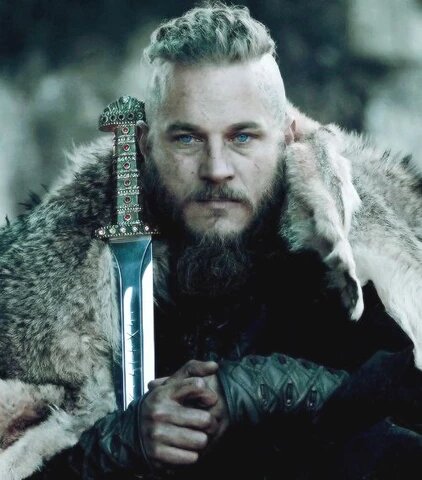Ragnar Lothbrok was a fearless Viking hero who ransacked England and France and fathered the Great Heathen Army. However the historicity of the man with “hairy breeches” is subject to debate. Where does Ragnar the man end and the myth begin?
Ragnar Lothbrok (also known as Ragnar Lodbrok) became widely known thanks to our favorite tv series “Vikings.” As with the legendary King Arthur , Ragnar Lothbrok appears as an amalgamation of a number of historical personages and minor characters of legend.
While many scholars doubt the very existence of Ragnar Lothbrok, there are a respectable number of historians who suggest that Ragnar did live, but his story was exaggerated to the point that he became a mythical figure. He most likely was a warlord who was the first Scandinavian to invade Britain. He is mentioned in several Nordic sagas, including one with his own name: The Saga of Ragnar Lothbrok, as well as Gesta Danorum saga, which is believed to be the most illustrious literary work to come out of Medieval Denmark, describing the country’s early history.
Both the name Ragnar and the nickname Lothbrok, which must not be confused with a surname, had many variations in the accounts of the age. “Lothbrok” could be interpreted as “hairy breeches” or “shaggy breeches” in Old Norse. He is said to have crafted the breeches in preparation to fight a dragon or giant serpent, to stop it from biting him.
His name could be written as Regnar or Regner while his nickname could be written as Lodbrok or Lodbrog. The legendary Viking hero, who was also a king of Denmark and Sweden, was also known as Ragnar Sigurdsson, as he was said to be the Swedish king Sigurd Ring’s (or Hring’s) son in some accounts.
And his martial prowess showed. Ragnar is believed to have been the scourge of both early Medieval England and France, raiding the Anglian kingdoms of Northumbria and Wessex on many occasions, along with the Kingdom of West Francia, concluding in the siege of Paris in 845.
Furthermore, he is also thought to have been married three times: first to shield-maiden Lagertha, second to the noblewoman Þóra Borgarhjǫrtr, and last but not least to Princess Aslaug. Each of these women have their own interesting stories. Aslaug, for example, is said to be the daughter of the dragonslayer Sigurd and the Valkyrie Brynhild and Þóra was the daughter of the jarl Herruð of Götaland (the town he saved from the aforementioned dragon).
Ragnar’s existence can also be proved through his many sons (all historical figures); Ivar the Boneless , Björn Ironside , Halfdan Ragnarsson , Sigurd Snake-in-the-Eye, and Ubba; the Norse chieftains who would eventually lead the Great Heathen Army that would invade England, controlling and constituting it as a unified Medieval state from 865 to 878, after which the Danelaw was created (a territory under Danish influence and rule in early Medieval Britain).
Ragnar’s sons invaded England to avenge their father’s murder at the hands of King Ælla of Northumbria, who, according to legend, seized Ragnar at some point and decided to sentence him to death by casting him into a pit full of snakes. If the story’s true (though many doubt it, suggesting it’s more likely Ragnar died somewhere along the Irish Sea between 852 and 856) that boastful Ragnar Lothbrok really headed into battle with just two ships to face the king, it would fit right in with his semi-mythical persona.
Stories say Lothbrok’s sons avenged their father’s death by capturing King Ælla and performing the blood-eagle on him.












